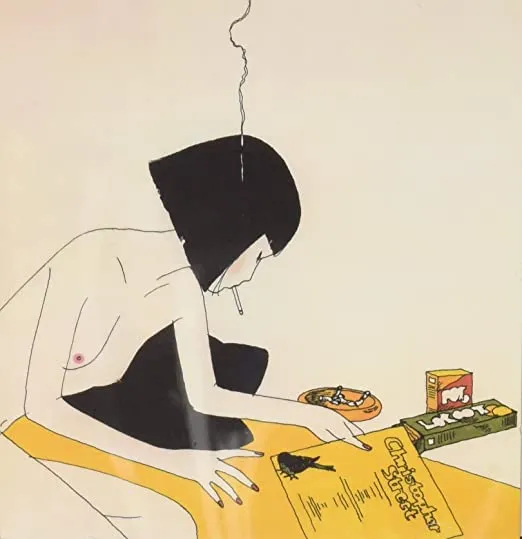This is the second article in a three-part series celebrating Asian and Asian American musicians. In the characteristically white American music industry landscape, it is crucial — now more than ever — to recognize artists that struggle against the forces preventing Asian American and Asian-origin albums from garnering international attention and acclaim. Please consider supporting these artists by directly purchasing their music during this pandemic.
#8: “Leak 04-13 (Bait Ones)” (2019) by Jai Paul

This album is relatively low on this list, but it is undoubtedly and incontestably one of the greatest albums of all time. As the title indicates, the album consists of leaked demos released illegally by an anonymous Bandcamp user in April of 2013. Paul has said that he feels comfortable releasing the album in the same track order as the user who originally leaked the demos.
Jai Paul is a British producer of Indian descent who made it big on the scene with the track “BTSTU,” posted on Myspace in 2010, and the followup track “Jasmine,” posted on Soundcloud in 2012. Catapulted by those two tracks, Paul became revered by musicians in the underground and mainstream pop music scene alike, with “BTSTU” being sampled by Drake, Charli XCX and Beyoncé. When the demos for his debut album were leaked in 2013, full of Mumbai sounds and Ravi Shankar sitar samples, Paul retreated from the public. The leak was tragic and traumatic for him: It was, for Paul, a very public disappointment to not be able to make his first statement on his own terms.
But with the official release of the tracks in 2019, Jai Paul’s influence on electronic pop grows constantly, with more power each and every year that passes. I turn on the record and, for every waking moment popping from the speaker grates, I feel an infinity arise within me. It’s the cosmic impossibility of two sampled sounds colliding. We speed into the abyss, we come to slow peaks and suddenly, we spike up, shot into the stratosphere and hit by a firework. You let your body fall down through the sky, through all of the tropical islands, the flying casino and bar, the donut shop with the Big Boy statue. This constant rollercoaster within the void held when two samples from different mastered songs are placed together — the sound is like a physics catastrophe, an unalterable possibility… and just like that, Paul disappeared. The leak was bait. We wanted more and then didn’t get it. The Conan O’Brien of Indian British music culture. Listed under Desi musicians on Wikipedia. My god. This is it.
#7: “monkshood” (2018) by BAP.

BAP. is an experimental, avant-garde hip-hop and rap group from the city of Jakarta, Indonesia. For about 30 minutes of their album “monkshood,” I thought I was listening to Jai Paul. BAP. is a project by rapper Kareem Soenharjo, and in 2018, it had been four years since he had entered into the Indonesia underground hip hop scene with his first releases (like 2016’s “F.I.D.H.M.O.T.” under the moniker Yosugi and 2017’s “belladonna”). When “monkshood” arrived, like birds in paradise, the album flew overhead silently with little public acclaim, and while Indonesian media began to recognize one of their country’s foremost hip hop figures, no one heard it much outside of that small media attention, some keen American listeners and of course, that tiny group of tireless individuals surrounding him in house shows.
On “monkshood” there are beats and swells — a combination of Miles Davis, King Krule, R.A.P. Ferreira (also known as Milo), and Kendrick. No one raps quite like Kendrick, but “vain” on “monkshood” has strong callbacks to “u” on Kendrick’s “To Pimp A Butterfly,” where Kendrick was screaming and you heard a maid knocking on the hotel room. “Vain” throws us into E. E. Cummings’ “next to of course god america i” and the klink klink of quickly drinking a glass of water or whiskey. Soenharjo tells us on the track, “man I never hurry and I bet the pain is gonna be here for the long haul, so pour out that alcohol, lady — is my living in vain?” over sonar synths, a deep bellowing Miles Davis trumpet tone and of course, the colliding of bourbon glasses.
The end of “samsara pt. II” sounds like a Migos track. It’s trap, but the album cover establishes the music as clearly Jakartan: a sliver of the crescent moon in the air, mixing with Jakarta instruments and clothes, laying down on the outer edge of the lunar cycle in the black air. This music will live forever.
#6: “Yume” (2014) by Lamp

Long ago, there were our forebears, The Beatles. Back in the day, if you told someone off the street that four boys from Liverpool, England were going to switch places constantly — a revolving doorway of a band, where everyone could sing, play drums, write songs, shred on guitar — you would be laughed out of the room. Come together. The Beatles was the band that lit the world on fire, the band whose accomplishments were transmitted across the world.
Throughout the 1990s, Japan saw the rise of the Shibuya-kei genre, a city pop-inspired microgenre centering on the Shibuya district of Tokyo where rich, stylish teenagers were listening to The Beatles and trying recording studio sessions on for size. These teenagers and 20-year-olds — ranging from Keigo Oyamada (better known as Cornelius) to the members of the Pizzicato Five — explored the crags and valleys of 1960s pop music, complete with chamber group strings and unorthodox, proficient, mind-blowing chord changes, and tried to make those sounds all their own.
But while that hip center of town still exists, Shibuya-kei doesn’t except in small doses, having long passed the expiration date for enthusiasm of such sounds. But, formed in 2000, Lamp persisted through these changes in taste, and in 2014, with a pick on the guitar, American-made effects on the pedalboard and $600 pedal mint-in-box, they made an album called ゆめ or “Yume.” They are one of the only ones to live forever from their age, Cornelius notwithstanding. I wonder how they feel today, knowing this.
Listen to “Yume” and hear the Beach Boys influence, with startling similarity to Brian Wilson’s magnum-opus “Smile.” Soaring synths and basses open the track “シンフォニー” (or “Symphony”), and you hear the same warm descending chord changes, chromatic bass lines and a familiar warmth to the falsetto vocal lines over accordions and piano. The whole world is found in this small pearl of a record. On the album cover, a young woman eats candy, smokes and looks at some old record titled “Christopher Street,” a reference to the gay NYC magazine of the same name. Nothing could be better.
#5: “Tsumanne” (2010) by Shinsei Kamettechan

No one knew this band back in 2010, at least outside the US — a small Japanese following supported this first major-label debut, but the strange sounds did not seem to penetrate internationally. Their singer is reedy, feminine, high-pitched and followed by a persistent echo around a quarter of a second after every note was sung. Then, the chanting starts.
But, I have no idea what they are singing about. We hear the wild guitars and noisy feedback, the echoed-out repeating piano notes; they startle the partial family portrait that adorns the plastic CD jewel case, imported from Japan. Is this… someone’s mother? And someone as a child? Could it be anything else? And then, like at all other times, you fall into seeing the great mirror, see yourself: like Justin Torres said in “Supportive Acts” published in BOMB Magazine, “I never thought I’d see my reflection, it hurts to look at him, and I feel like it should be simple.”
How could this hurt so much, when the singer is screaming over backup singers singing falsetto “ah”s? I found this band when I was researching Weatherday, a band that released an extraordinary Swedish queer non-binary narrative in the form of an experimental emo album titled “Come In.” I looked at their declared influences on their Facebook page and such, they say Shinsei Kamettechan? “How many times have I drowned here, how many times have I drowned?,” like Car Seat Headrest sings.
